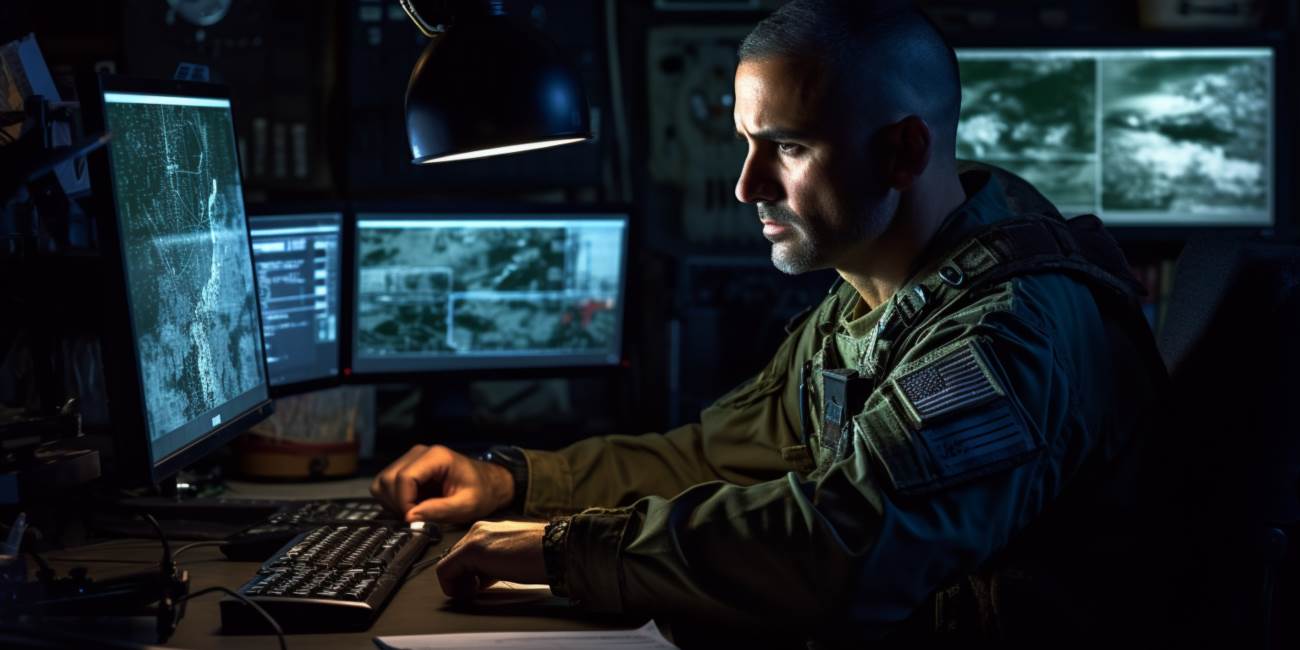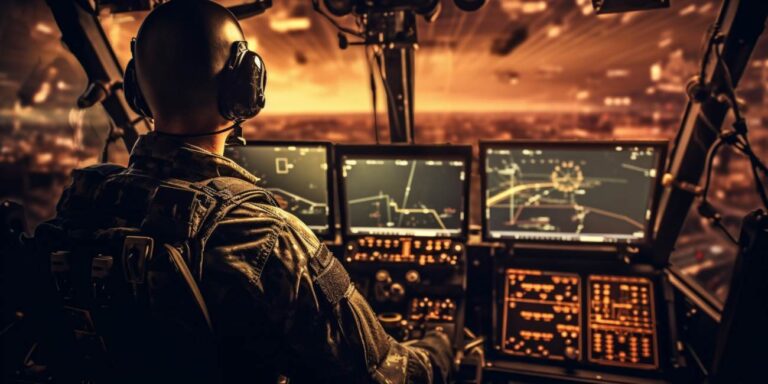One of the key tools for tracking military aircraft is flight radar. While not all military planes appear on these platforms due to security reasons, some are visible, providing enthusiasts and the curious with a glimpse into their activities. To begin your journey, visit a reliable flight radar website such as Flightradar24 or ADS-B Exchange.
Keep in mind that not all military aircraft will broadcast their positions openly. However, many military planes are equipped with a technology called ADS-B (Automatic Dependent Surveillance–Broadcast), which transmits real-time location data. To narrow down your search on a flight radar website, look for aircraft with ADS-B capabilities.
When using a flight radar platform, you can utilize the search or filter options to refine your focus. Enter specific criteria, such as the aircraft type or registration number, if available. This can significantly enhance your chances of spotting military aircraft on the radar.
Another valuable tip is to be aware of common military aircraft designations. Knowing the distinct features and characteristics of various military planes can help you identify them on a flight radar. This knowledge includes understanding differences in size, shape, and even flight patterns that may distinguish military aircraft from their civilian counterparts.
For a more in-depth approach, consider using online communities and forums dedicated to aviation enthusiasts. These platforms often share information and sightings of military aircraft, enhancing your chances of discovering interesting flights on a flight radar.
It’s essential to note that tracking military aircraft comes with certain limitations. Some military operations are classified, and their aircraft may operate in stealth mode, rendering them invisible on public radar platforms. Exercise caution and respect privacy and security concerns when delving into the world of military aviation tracking.
Online flight tracking services showing military cargo aircrafts
Online flight tracking services have become a fascinating tool for aviation enthusiasts and curious minds alike. These platforms provide real-time information on aircraft movements, offering a glimpse into the dynamic world of aviation. While commercial flights dominate the airspace, a distinctive feature catching the attention of many users is the ability to track military cargo aircrafts.
One of the notable online flight tracking services offering this unique capability is FlightRadar24. This platform utilizes a vast network of sensors and ADS-B receivers to gather data from aircraft worldwide. Users can search for specific aircraft types, and when it comes to military cargo planes, the experience is both thrilling and informative.
Imagine sitting at your computer or scrolling through the app, and suddenly, you spot the unmistakable icon of a Globemaster C-17 traversing the skies. The real-time nature of these tracking services adds an element of excitement as you witness military movements happening in the present moment.
For aviation enthusiasts, these services provide a unique opportunity to track and identify various military cargo aircraft models. From the iconic Hercules C-130 to the massive Antonov An-124 Ruslan, the virtual sky is adorned with these powerful machines on their missions.
What makes online flight tracking even more intriguing is the ability to observe flight routes and destinations. While commercial flights often follow well-established paths, military cargo aircraft may embark on more unconventional routes. This could be indicative of specific military operations, training exercises, or humanitarian missions.
For those interested in the global movement of military forces, online flight tracking services act as an unprecedented window into this world. The information gleaned from these platforms not only satisfies curiosity but also raises awareness of military activities around the globe.
It’s important to note that while online flight tracking services offer a wealth of information, there are limitations. Some military aircraft may not be visible on these platforms due to security measures or lack of ADS-B transponders. However, the ones that are trackable provide a captivating insight into the otherwise secretive realm of military aviation.
As technology advances, the accuracy and coverage of online flight tracking services continue to improve. Aviation enthusiasts, analysts, and even military buffs find themselves drawn to these platforms, immersing themselves in the world of aircraft movements.
Advanced flight tracking tools capable of detecting military jets

Flight tracking has evolved significantly with advanced tools that go beyond mere civilian aircraft monitoring. In the realm of aviation enthusiasts and professionals, paid premium flight apps have taken center stage, offering a level of sophistication that extends to detecting even the most elusive military jets.
One remarkable aspect of these advanced flight tracking tools is their capability to penetrate the veil of secrecy surrounding military operations. While conventional radars may struggle to pinpoint the movements of stealth fighters, paid premium flight apps leverage cutting-edge technologies to identify and track these high-tech aircraft.
Stealth fighters, renowned for their ability to operate undetected, pose a challenge for standard flight tracking systems. However, users of premium flight apps gain access to a wealth of information, including real-time data on the whereabouts of these military assets.
The intricacies of these paid premium flight apps lie in their comprehensive databases, which go beyond publicly available information. These tools incorporate classified data sources to enhance their tracking capabilities, allowing users to identify not only commercial flights but also military aircraft, including elusive stealth fighters.
Imagine having the power to distinguish between a routine commercial flight and a classified military operation. This is precisely what sets premium flight apps apart, providing users with an unprecedented level of insight into the skies. The integration of advanced algorithms and data analytics enables these tools to differentiate between standard aviation and the covert maneuvers of military jets.
For aviation enthusiasts with a keen interest in military aircraft, these paid premium flight apps become invaluable resources. Whether it’s identifying the latest generation of stealth fighters or tracking historical military flights, these tools offer a depth of information that goes beyond the capabilities of traditional flight tracking systems.
To illustrate the capabilities of these advanced flight tracking tools, consider the following hypothetical scenario: A user opens their premium flight app and, within moments, detects the presence of a stealth fighter conducting a classified mission. The app provides details on the aircraft type, current location, and even historical data related to previous flights—information that goes far beyond what conventional radar systems can deliver.
Using receivers and antennas to receive military planes signals
When delving into the world of radio signals receivers, enthusiasts often find themselves captivated by the intricate dance of frequencies that military planes perform in the vast expanse of the electromagnetic spectrum. Armed with cutting-edge technology, those who seek to explore these signals embark on a journey that involves not only decoding the mysteries hidden within the transmissions but also understanding the sophisticated interplay of transponders that add an extra layer of complexity to the aerial ballet.
One of the pivotal elements in this pursuit is the deployment of advanced antennas that act as the silent sentinels, capturing the ethereal whispers of military aircraft soaring through the skies. These antennas, meticulously designed and strategically positioned, serve as the first line of engagement in the delicate art of signal interception.
As signals traverse the airwaves, the receivers come into play, acting as the vigilant gatekeepers of the invisible messages. These receivers, equipped with state-of-the-art technology, possess the ability to discern signals amidst the cacophony of frequencies, a skill crucial in the decoding process. The synergy between antennas and receivers creates a symbiotic relationship, forming the backbone of any successful endeavor in intercepting military plane transmissions.
The crux of this exploration lies in the art of decoding. It’s not merely about capturing signals but deciphering the encrypted language they speak. With prowess in signal processing and cryptographic analysis, enthusiasts can unveil the intelligence embedded within the radio transmissions. The decoding process unveils a realm of information, providing insights into military operations, communications, and, occasionally, classified data.
At the heart of this intricate dance are the elusive transponders, devices that add an extra layer of challenge to the decoding process. These electronic companions of military planes emit signals that contain vital information, and decoding them requires a profound understanding of the specific protocols and encryptions employed.
For those engrossed in this pursuit, creating a table of recorded signals becomes a valuable asset. This organized repository allows enthusiasts to categorize and analyze the plethora of intercepted transmissions systematically. The table may include details such as frequency, time of transmission, and any notable characteristics, providing a comprehensive overview of the captured signals.
As the journey into the realm of military plane signals progresses, enthusiasts continue to refine their techniques, pushing the boundaries of what’s possible in the realm of radio signals receivers decoding transponders. The quest for knowledge and the thrill of uncovering the hidden aspects of the electromagnetic spectrum drive these individuals, making each decoded signal a triumph in the pursuit of understanding the secret language of the skies.
See also:
- Does flight tracker show military aircraft: what you need to know
- How the powerful u.s. military aircrafts affecting global security
- When is a pilot on an ifr flight plan responsible for avoiding other aircraft
- Jak odebrać bilet lotniczy zakupiony online
- The impressive number of aircraft in us air force






